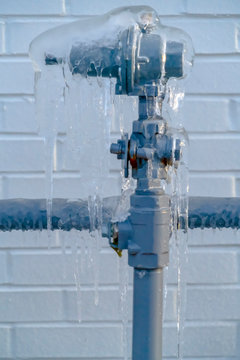How to Maintain Your Pipes from Freezing Damage: Crucial Guidance
How to Maintain Your Pipes from Freezing Damage: Crucial Guidance
Blog Article
The author is making a number of good points on Helpful Tips to Prevent Frozen Pipes this Winter as a whole in the article just below.

Winter can damage your pipes, especially by freezing pipes. Below's exactly how to avoid it from occurring and what to do if it does.
Introduction
As temperatures decline, the danger of icy pipelines boosts, potentially leading to expensive repair work and water damage. Understanding just how to avoid frozen pipelines is important for home owners in chilly environments.
Avoidance Tips
Shielding prone pipes
Cover pipelines in insulation sleeves or utilize heat tape to shield them from freezing temperatures. Focus on pipelines in unheated or external areas of the home.
Heating methods
Keep interior spaces adequately heated, specifically areas with pipes. Open up closet doors to allow warm air to distribute around pipelines under sinks.
Just how to recognize frozen pipes
Look for decreased water flow from faucets, unusual odors or noises from pipes, and visible frost on exposed pipes.
Long-Term Solutions
Architectural changes
Take into consideration rerouting pipelines far from outside walls or unheated locations. Add additional insulation to attic rooms, basements, and crawl spaces.
Upgrading insulation
Invest in top quality insulation for pipes, attic rooms, and walls. Proper insulation helps keep constant temperatures and lowers the danger of icy pipelines.
Safeguarding Outdoor Pipes
Yard tubes and outdoor taps
Detach and drain garden hoses prior to winter. Set up frost-proof faucets or cover exterior faucets with insulated caps.
Recognizing Icy Pipes
What causes pipelines to freeze?
Pipelines freeze when exposed to temperatures listed below 32 ° F (0 ° C) for prolonged durations. As water inside the pipes ices up, it increases, taxing the pipeline wall surfaces and possibly creating them to break.
Dangers and damages
Frozen pipes can bring about water disruptions, building damages, and pricey repairs. Ruptured pipelines can flooding homes and trigger substantial structural damage.
Signs of Frozen Piping
Recognizing icy pipes early can prevent them from breaking.
What to Do If Your Pipelines Freeze
Immediate actions to take
If you believe icy pipelines, keep faucets open up to alleviate pressure as the ice thaws. Make use of a hairdryer or towels soaked in warm water to thaw pipes gradually.
Conclusion
Preventing frozen pipelines requires aggressive steps and fast responses. By comprehending the causes, indications, and safety nets, homeowners can shield their plumbing throughout winter.
5 Ways to Prevent Frozen Pipes
Drain Outdoor Faucets and Disconnect Hoses
First, close the shut-off valve that controls the flow of water in the pipe to your outdoor faucet. Then, head outside to disconnect and drain your hose and open the outdoor faucet to allow the water to completely drain out of the line. Turn off the faucet when done. Finally, head back to the shut-off valve and drain the remaining water inside the pipe into a bucket or container. Additionally, if you have a home irrigation system, you should consider hiring an expert to clear the system of water each year.
Insulate Pipes
One of the best and most cost-effective methods for preventing frozen water pipes is to wrap your pipes with insulation. This is especially important for areas in your home that aren’t exposed to heat, such as an attic. We suggest using foam sleeves, which can typically be found at your local hardware store.
Keep Heat Running at 65
Your pipes are located inside your walls, and the temperature there is much colder than the rest of the house. To prevent your pipes from freezing, The Insurance Information Institute suggests that you keep your home heated to at least 65 degrees, even when traveling. You may want to invest in smart devices that can keep an eye on the temperature in your home while you’re away.
Leave Water Dripping
Moving water — even a small trickle — can prevent ice from forming inside your pipes. When freezing temps are imminent, start a drip of water from all faucets that serve exposed pipes. Leaving a few faucets running will also help relieve pressure inside the pipes and help prevent a rupture if the water inside freezes.
Open Cupboard Doors
Warm your kitchen and bathroom pipes by opening cupboards and vanities. You should also leave your interior doors ajar to help warm air circulate evenly throughout your home.

As a fervent reader on Prevent Frozen Pipes , I assumed sharing that excerpt was a smart idea. So long as you enjoyed our article please be sure to share it. I thank you for reading our article about How To Avoid Freezing Pipes.
Request An Appointment Report this page